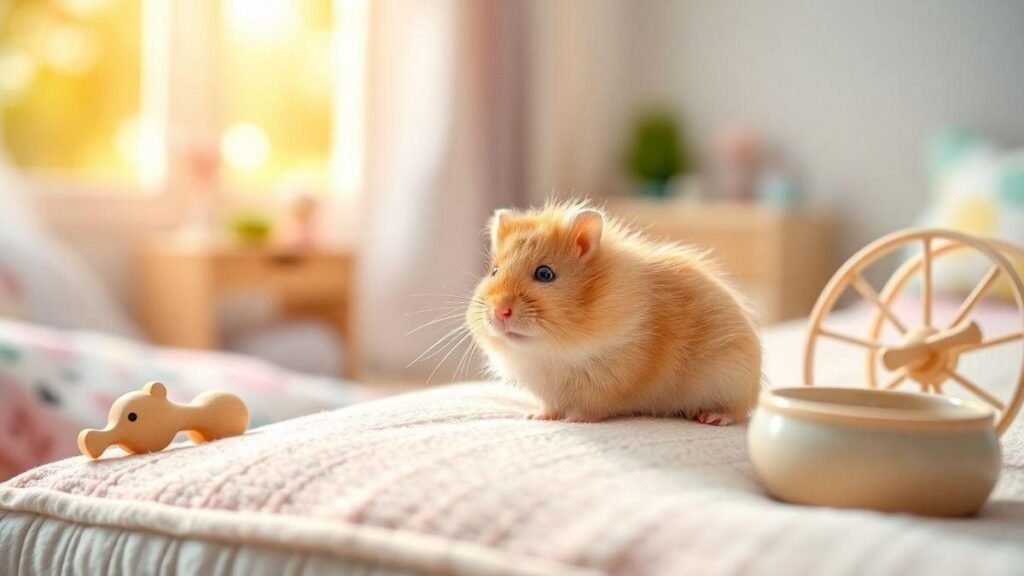Benefícios de ter um hamster como animal de estimação para crianças
Benefícios de ter um hamster como animal de estimação para crianças inspired me to share how I use a tiny pet to teach responsibility, grow empathy, and spark hands-on learning. I set simple feeding and cage chores with a short daily routine and checklist so my child practices tasks and celebrates small wins. I model gentle handling and safe interactions, teach hamster body language, and choose low-maintenance routines that fit our family. Over time my child gains confidence, better social skills, and quiet moments of stress relief.
Key takeaway
- Teaches responsibility through short, repeatable tasks
- Builds empathy and emotional reading of animals
- Offers hands-on learning: science, math, reading
- Fits busy families as a low-maintenance pet
- Improves confidence, social skills, and calm
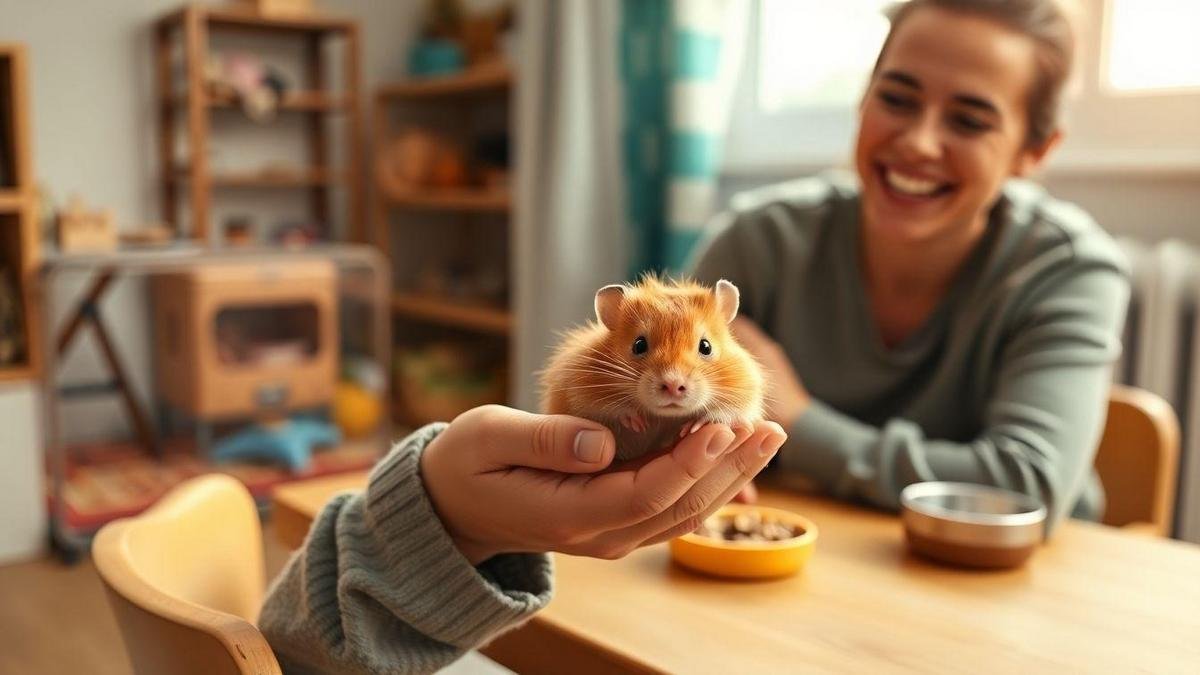
How I teach responsibility with a hamster (Benefícios de ter um hamster como animal de estimação para crianças)
I start with a short, clear plan so chores feel doable. Small responsibilities — feeding, topping up water, and quick spot-cleaning — become daily wins. I supervise at first, praise effort, then step back when my child does it well.
- Use fixed times (morning and evening) to create a reliable routine.
- Keep tasks short to match a child’s attention span.
- Praise specific actions to build habit and pride.
Task checklist (place on the cage):
| Task | Who | Time |
|---|---|---|
| Fill food dish | Child (supervised) | 2 min |
| Fresh water | Child (supervised) | 1 min |
| Spot clean bedding | Parent child | 5 min (2–3x/week) |
| Full cage clean | Parent | 30–40 min (weekly) |
I link food choices to simple nutrition guidance (pellets and safe treats) and keep portioning consistent — see ideas for vitamin-rich foods for pet rodents. For safety, I follow tips on keeping food and water areas clean and safe. The three–five item checklist with stickers as rewards reduces confusion and creates daily accomplishment.
Nurturing empathy and emotional growth
I model calm and gentle handling so my child learns kindness by copying. Short, supervised sessions build trust.
Key steps:
- Approach slowly and let the hamster sniff your hand.
- Use two hands to support the hamster.
- Stop if the hamster freezes or shows stress.
Hamster body language table:
| Signal | Meaning | What the child learns |
|---|---|---|
| Freezing | Fear or surprise | Stop and give space |
| Teeth chattering | Annoyance/warning | Respect boundaries |
| Curious sniffing | Interest | Gentle approach OK |
| Hiding | Stress/tiredness | Quiet time helps |
| Grooming | Comfortable | Bonding is working |
Short stories and role-play help children remember cues and build emotional literacy; consider activities from mental stimulation guides to keep learning playful.
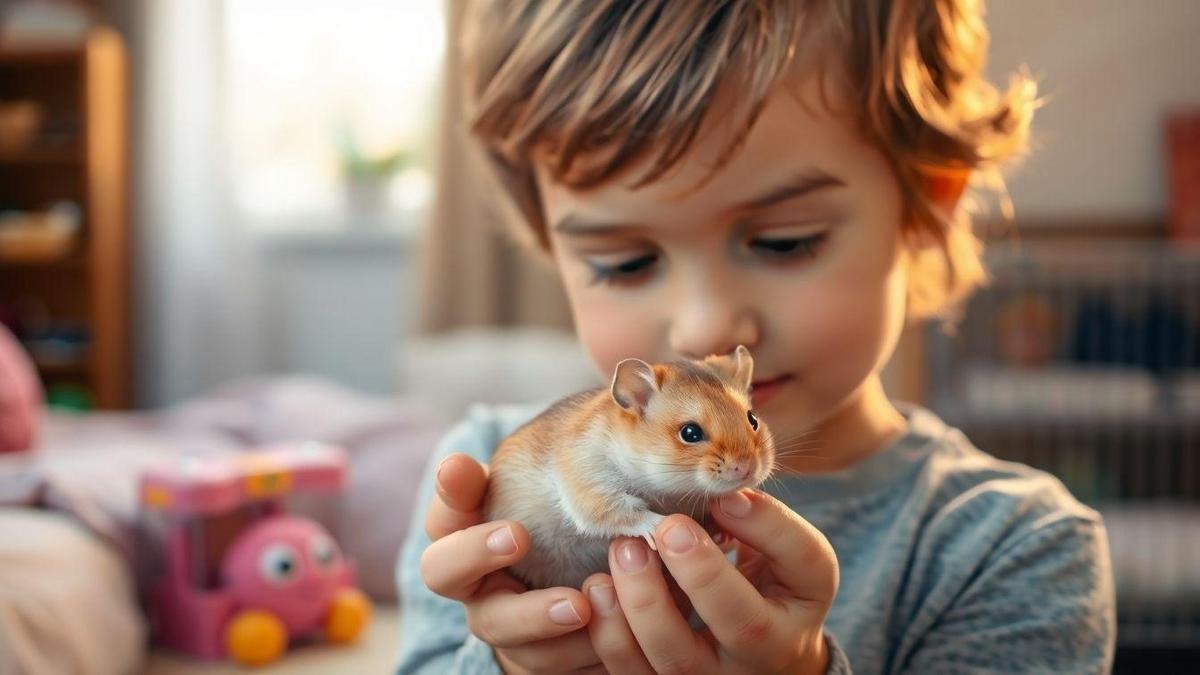
Why I recommend hamsters as low-maintenance pets for children
Hamsters offer companionship without huge chores. They usually live about 2–3 years, long enough to bond but short enough for manageable commitment. A few minutes daily keeps them healthy and children involved.
Daily care plan:
| Task | Time/day | Notes |
|---|---|---|
| Feed (measured portion) | 2–3 min | Pellets small treat |
| Water check | 1 min | Test bottle flow |
| Quick tidy | 2–6 min | Spot-clean to avoid odors |
| Weekly deep clean | 30 min | Replace bedding, check toys |
Choose breed & gear that fit your household — read practical tips on creating a safe indoor setup in how to make a pet-friendly indoor space and use care basics from the complete care guide. Pick a solid wheel, safe bedding, chew toys, and a secure, easy-to-clean cage. Keep the cage in a calm spot and respect the hamster’s sleep schedule; resources about helping pets adjust to their indoor environment are useful when you relocate the habitat.
Hands-on learning: science, math, and reading
Hamsters are great for practical lessons.
- Life cycles: show growth stages (baby → adult) to teach biology.
- Diet: measure portions and discuss healthy choices; see safe food ideas in rodent nutrition tips.
- Habitat: build a cozy nest to learn about shelter and comfort; use inspiration from pet-friendly space ideas.
Sample activities:
| Topic | Activity | Learning result |
|---|---|---|
| Life cycle | Look at photos and name stages | Understand growth |
| Diet | Measure food and offer veggies | Portioning and choices |
| Habitat | Arrange bedding and hideout | Shelter and comfort |
Turn care into math and reading practice: count scoops, read labels, chart weights. Keep it brief — learning by doing.
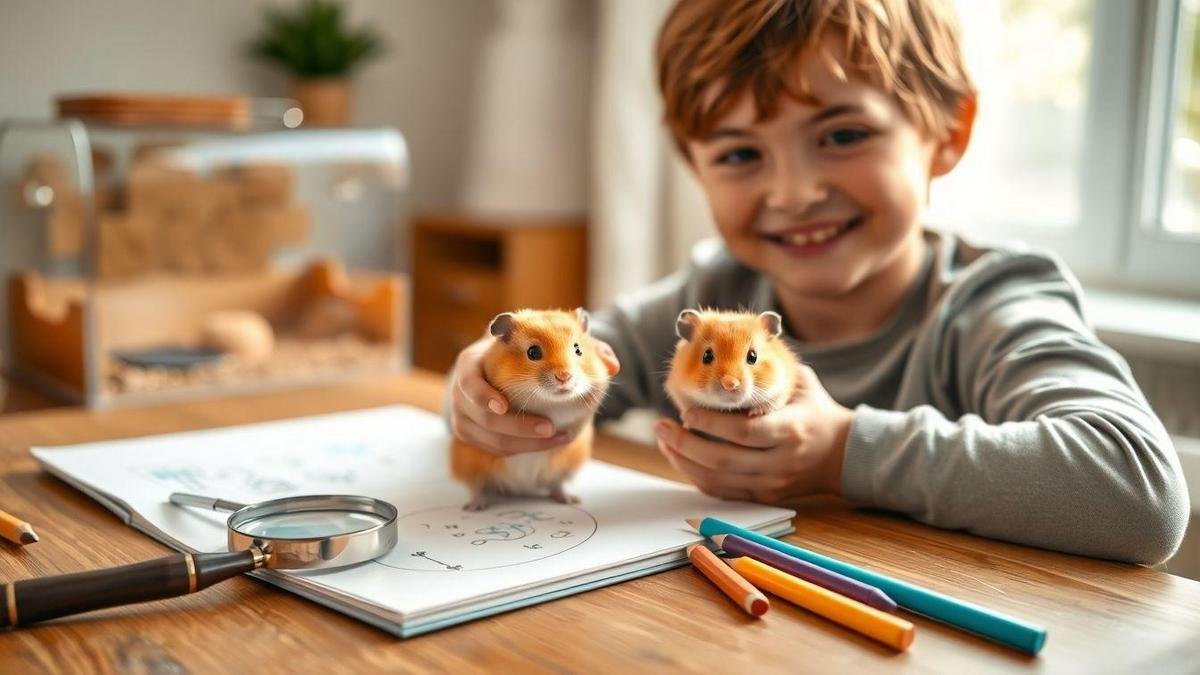
Building social skills and confidence
Teaching a friend to handle or care for the hamster boosts communication and pride. I have my child demonstrate short, safe steps: how to hold, how to offer food, and three habitat points to share.
- Celebrate small wins (stickers, photos, praise).
- Rotate tasks to teach teamwork and reliability.
- Use short demos to practice speaking clearly and calmly.
Task rotation example:
| Task | Age | Skills learned |
|---|---|---|
| Daily feeding | 5 | Routine, honesty |
| Cage cleaning (help) | 6 | Responsibility, teamwork |
| Holding practice | 4 | Patience, calm |
Pair demonstrations with straightforward care tips from the care guide to keep explanations simple and accurate.
Reducing stress and supporting emotional health
Short, mindful interactions with a hamster lower anxiety and build self-regulation.
Mindful routine:
| Time | Activity | Benefit |
|---|---|---|
| 2 min | Watch wheel or ball | Calms and lowers agitation |
| 5 min | Gentle lap hold | Boosts comfort and focus |
| 8–10 min | Feeding or quiet play | Builds connection and calm |
I guide my child to notice whiskers, paws, and breaths, ask how they feel, and practice slow breathing. These little rituals add up. If you notice behavior changes, check resources on signs of boredom and fixes or ways to keep pets calm during changes.
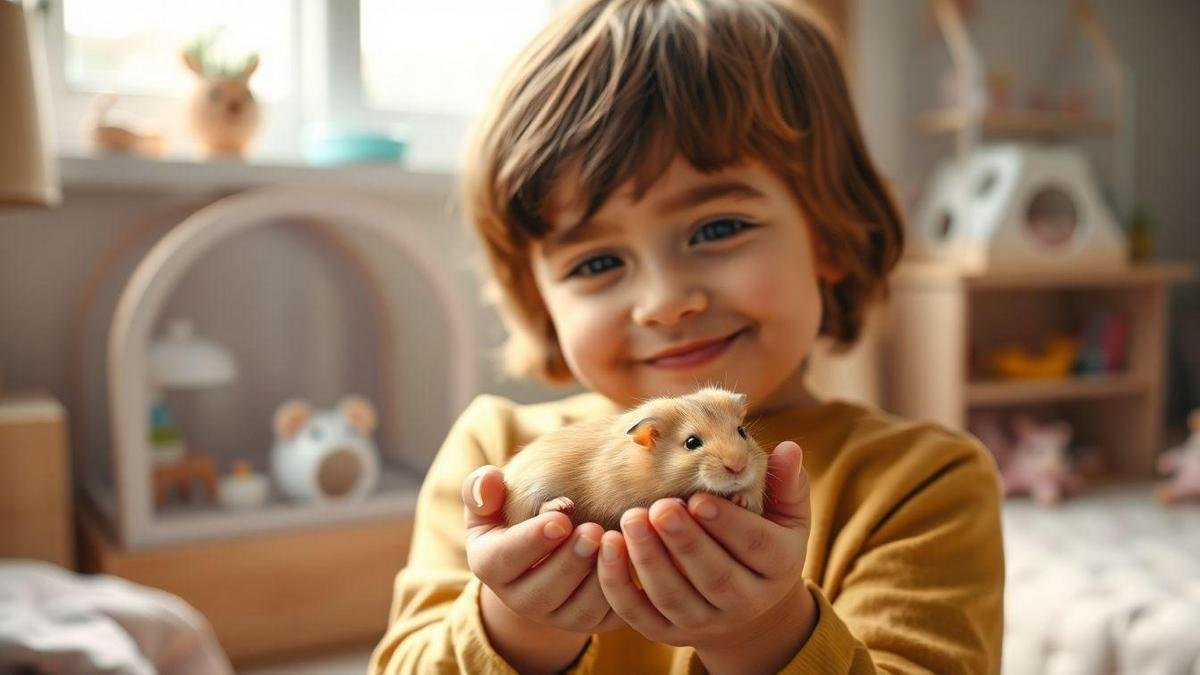
Top benefits — Benefícios de ter um hamster como animal de estimação para crianças
- Responsibility: predictable chores build habits.
- Empathy: reading body language and gentle care.
- Hands-on learning: science, math, reading practice.
- Low maintenance: short daily routines fit busy families.
- Emotional support: calm, comfort, reduced stress.
- Social growth: practice explaining and sharing care.
- Confidence: celebrating small wins reinforces self-trust.
Including the phrase Benefícios de ter um hamster como animal de estimação para crianças helps summarize why hamsters are a smart, child-friendly choice.
Practical tips (quick)
- Keep checklists simple and visible — build them using a daily routine template.
- Use pictures for younger kids.
- Wash hands before and after handling and maintain clean feeding areas per food-and-water safety tips.
- Limit handling sessions and watch for stress signs; consult how to help pets feel safe if needed.
- Choose a solid wheel and safe bedding; set up a calm, accessible habitat with ideas from pet-friendly indoor space guidance.
- Schedule a vet check if you notice low energy, messy fur, or appetite loss.
Conclusion
A tiny hamster can be a big teacher. By keeping care simple, using short routines and a small checklist, children build responsibility, empathy, and confidence—one small win at a time. The phrase Benefícios de ter um hamster como animal de estimação para crianças captures how this little pet supports learning, emotional growth, and family connection without overwhelming time demands.
For more tips, stories, and templates, visit https://blogcraelo.com.
Frequently asked questions
Q: How does a hamster teach responsibility to kids?
A: Short, supervised chores (feeding, water, spot-cleaning) create reliable habits and daily accountability.
Q: Can a hamster help shy kids make friends?
A: Yes—talking about a pet is an easy, calming conversation starter that helps shy children connect.
Q: Are hamsters affordable and low-cost for families?
A: Typically yes—food and bedding are inexpensive; regular vet care is needed only if problems appear.
Q: Do hamsters teach empathy and care?
A: Absolutely—learning to read body language, respect boundaries, and respond kindly nurtures empathy.
Q: What are the main Benefícios de ter um hamster como animal de estimação para crianças?
A: The main benefits are responsibility, empathy, routine, hands-on learning, emotional comfort, and social confidence.

